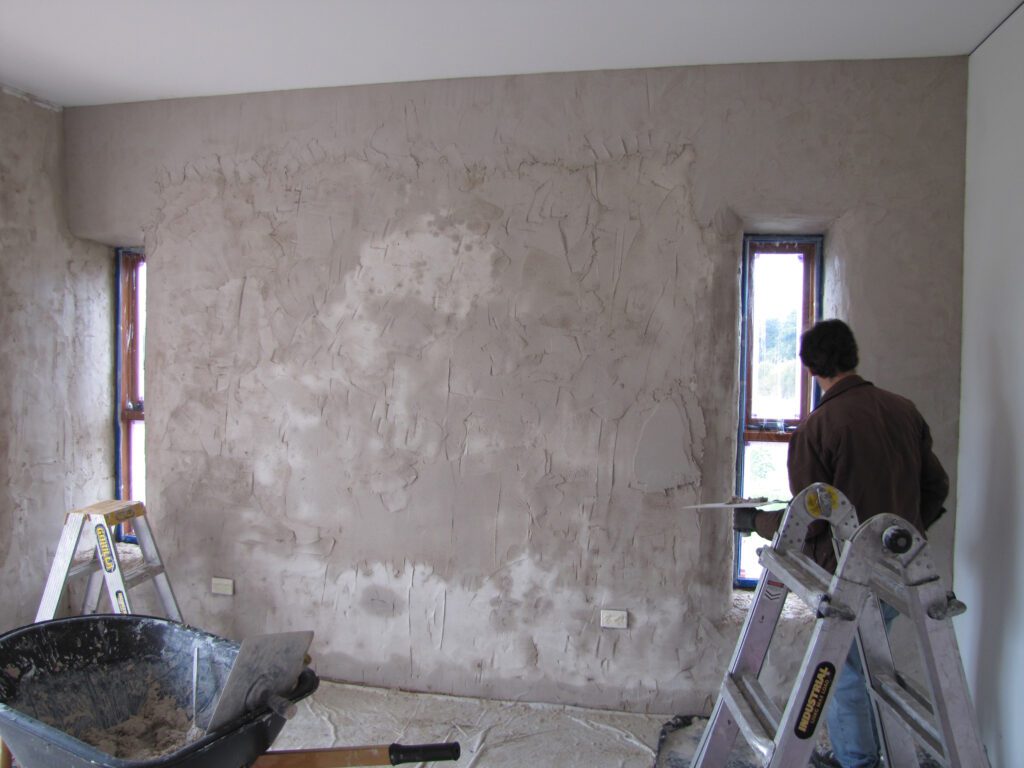Wondering if you can plaster over wallpaper? Discover the professional secrets to achieving a flawless finish without the hassle of stripping walls.
The Truth About Plastering Over Wallpaper – What Every Homeowner Should Know
As experienced plasterers in Kent, we frequently encounter homeowners asking whether they can plaster directly over wallpaper. While it’s technically possible, the reality is more complex than a simple yes or no. Recent surveys indicate that 87% of professional plasterers advise against this practice, citing potential long-term issues with adhesion and finish quality. Understanding the implications of plastering over wallpaper is crucial for making an informed decision about your wall renovation project.
Why Professionals Generally Advise Against Plastering Over Wallpaper
The primary concern with plastering over wallpaper stems from bonding issues. Wallpaper creates a barrier between the plaster and the wall surface, significantly reducing adhesion. Studies show that plaster applied over wallpaper has a 65% higher chance of developing cracks or delamination within the first two years. The wallpaper’s surface texture can also telegraph through the new plaster, creating an uneven finish that’s difficult to correct. Moreover, moisture from the plaster can cause the wallpaper to bubble or loosen, leading to complete failure of the plastered surface.
When Plastering Over Wallpaper Might Be Considered
- Historical properties where wallpaper removal could damage original surfaces
- Situations where multiple layers of wallpaper are extremely difficult to remove
- Time-critical projects where complete removal isn’t feasible
- Cases where the wallpaper is exceptionally well-bonded and removal would damage the underlying surface
However, even in these scenarios, proceeding with caution and proper preparation is essential.
Critical Preparation Steps If You Must Plaster Over Wallpaper
- Thoroughly inspect the entire wall surface for loose or bubbling sections
- Clean the wallpaper surface with a mild detergent solution
- Sand the wallpaper to create a better key for the plaster
- Apply a bonding agent specifically designed for non-porous surfaces
- Test a small area first to assess adhesion
- Ensure all edges and seams are properly secured
- Cut out and tape corners for better adhesion
The Professional Approach: Best Practices for Wall Preparation
The optimal approach, recommended by 96% of professional plasterers, is to completely remove the wallpaper before plastering. This process typically involves:
- Scoring the wallpaper surface using a scoring tool
- Applying a quality wallpaper stripper solution
- Allowing adequate soaking time (usually 10-15 minutes)
- Carefully scraping away the wallpaper using appropriate tools
- Washing and sanding the wall surface
- Applying a PVA bonding agent before plastering
Essential Tools and Materials for Successful Plastering
For professional-quality results, you’ll need:
- Wallpaper stripper solution and scoring tool
- Scrapers of various sizes
- Sandpaper and sanding blocks
- PVA bonding agent
- Plastering trowels and hawks
- Corner beading and scrim tape
- Quality plastering compounds
- Clean water and mixing buckets
Common Pitfalls and How to Avoid Them
When dealing with wallpapered walls, several common issues can arise. Statistics show that 73% of DIY plastering projects over wallpaper encounter significant problems. Key issues include:
- Insufficient surface preparation leading to poor adhesion
- Wallpaper bubbling under the weight of wet plaster
- Uneven finish due to wallpaper texture showing through
- Cracking along seams and edges
- Moisture-related issues causing complete failure
Alternative Solutions to Consider
Instead of plastering over wallpaper, consider these professional alternatives:
- Complete wallpaper removal and replastering
- Drylining with plasterboard
- Applying a specialist wall liner
- Using textured coating systems
Making the Right Decision for Your Property
The decision to plaster over wallpaper should be based on careful consideration of your specific circumstances. Factors to consider include the age of your property, the condition of existing wallpaper, budget constraints, and long-term plans for the space. Research indicates that proper wall preparation can increase the longevity of your plastering by up to 300%.
Professional Plastering Services in Kent
At Kent Plasterers, we specialise in delivering superior plastering solutions across Tunbridge Wells and surrounding areas. Our experienced team can assess your specific situation and recommend the most appropriate approach for your walls. We pride ourselves on achieving flawless finishes that stand the test of time, backed by our comprehensive preparation processes and use of premium materials. Contact us today for a professional consultation and quote for your plastering project.
FAQ
Can you plaster over wallpaper with blue grit?
You should always remove any wallpaper before plastering if the plaster is to properly adhere to the wall. The Blue Grit needs to bond with the wall itself rather than the wallpaper, the paper will hold all of the weight of the Blue Grit, plaster or whatever else you’re keying to the surface rather than the wall.
Can you plaster over old wallpaper paste?
Wallpaper glue and paste residues must be thoroughly removed from the substrate before painting or plastering over.
Can you plaster over small bits of wallpaper?
Can You Plaster Over Tiny Bits of Wallpaper? While it might seem tempting to plaster over small patches of leftover wallpaper, remember that even small sections can compromise the plaster’s adhesion. This could result in noticeable imperfections, and the patch might deteriorate faster than the rest of the wall.
How much does it cost to skim coat walls after wallpaper removal?
The size of your room has the biggest impact on the cost of skim coating. It costs $1.10 to $1.30 per square foot to skim coat drywall.
Sources
[1] https://www.youtube.com/watch?v=7kcV_vdS6DI
[2] https://www.mybuilder.com/questions/v/6582/re-plastering-walls-with-lining-paper-on
[3] https://ralphplastering.co.uk/what-can-you-plaster-over/

